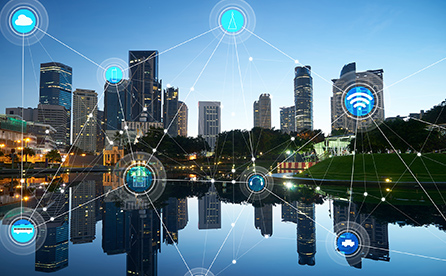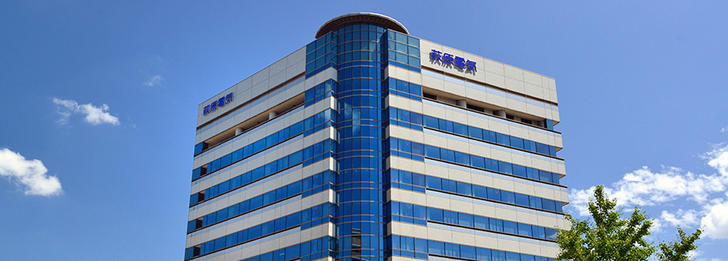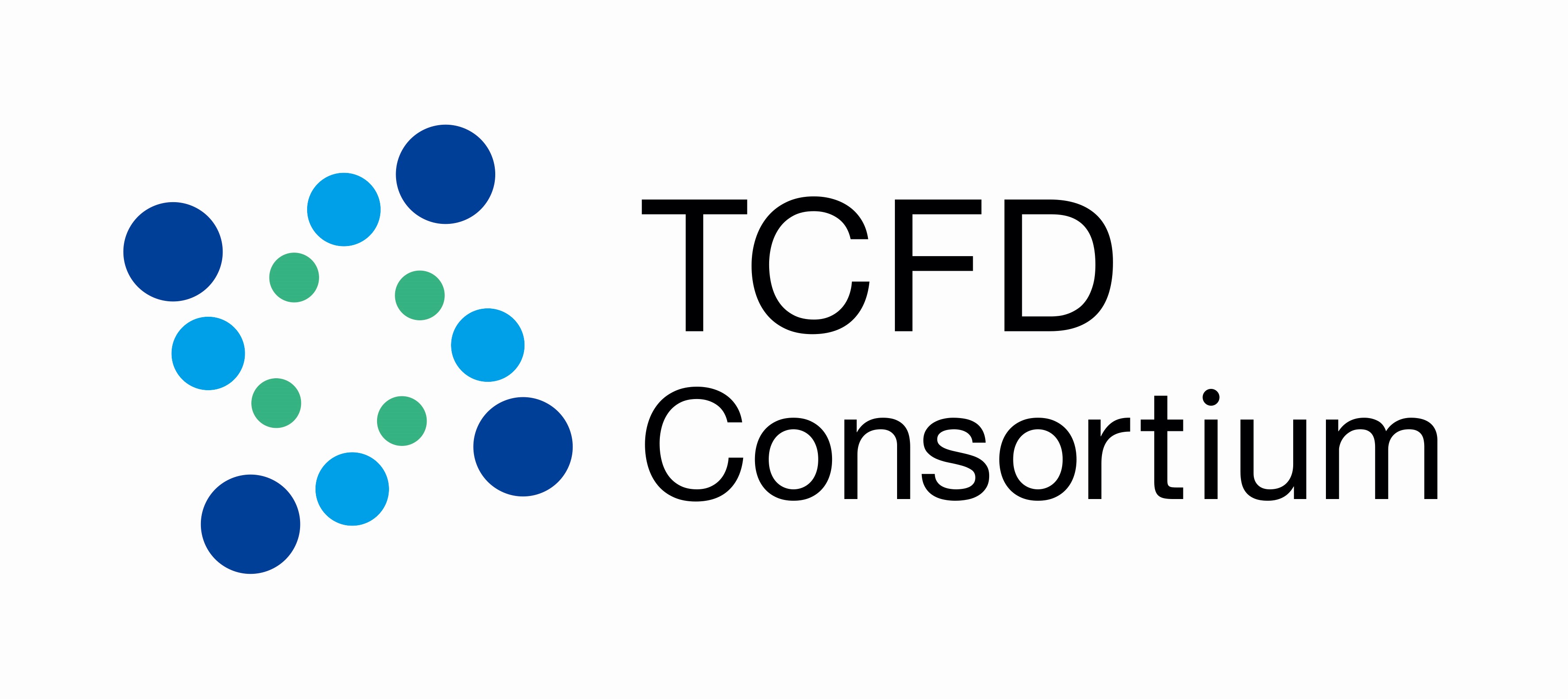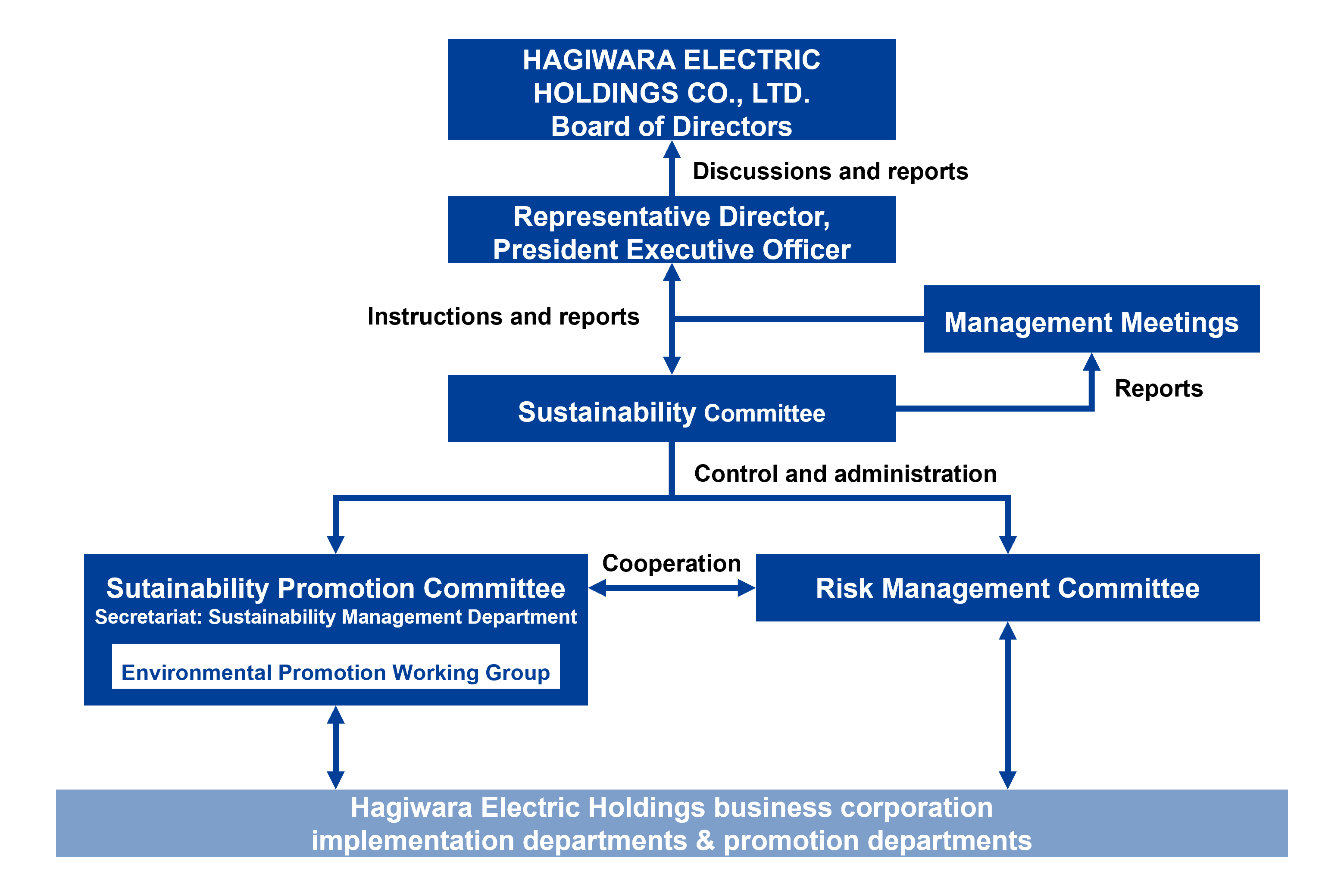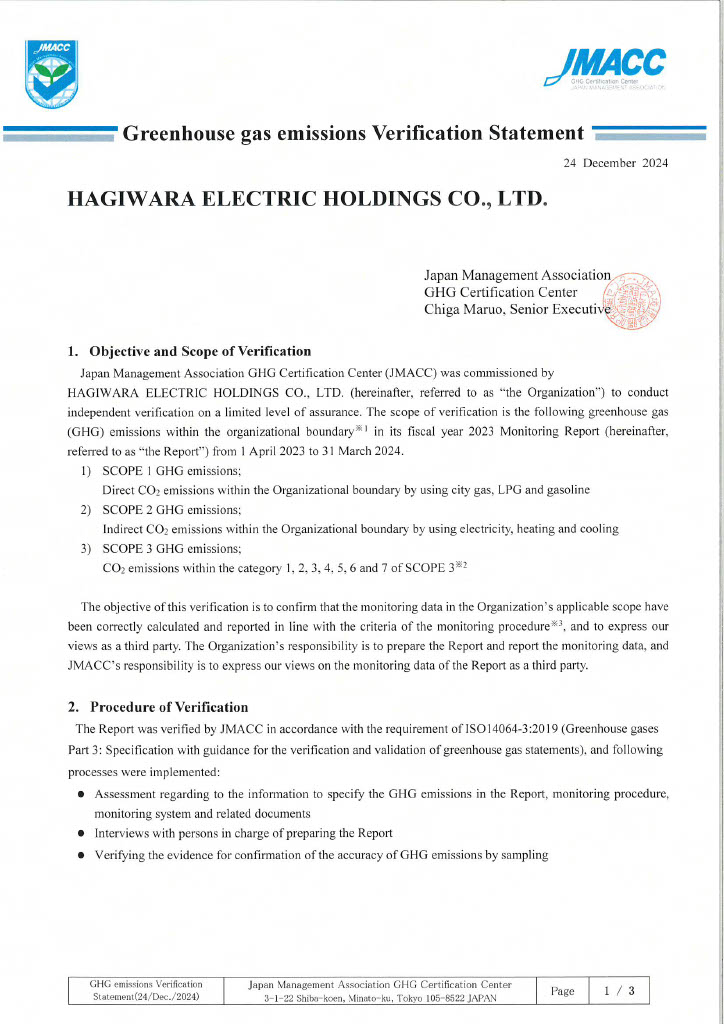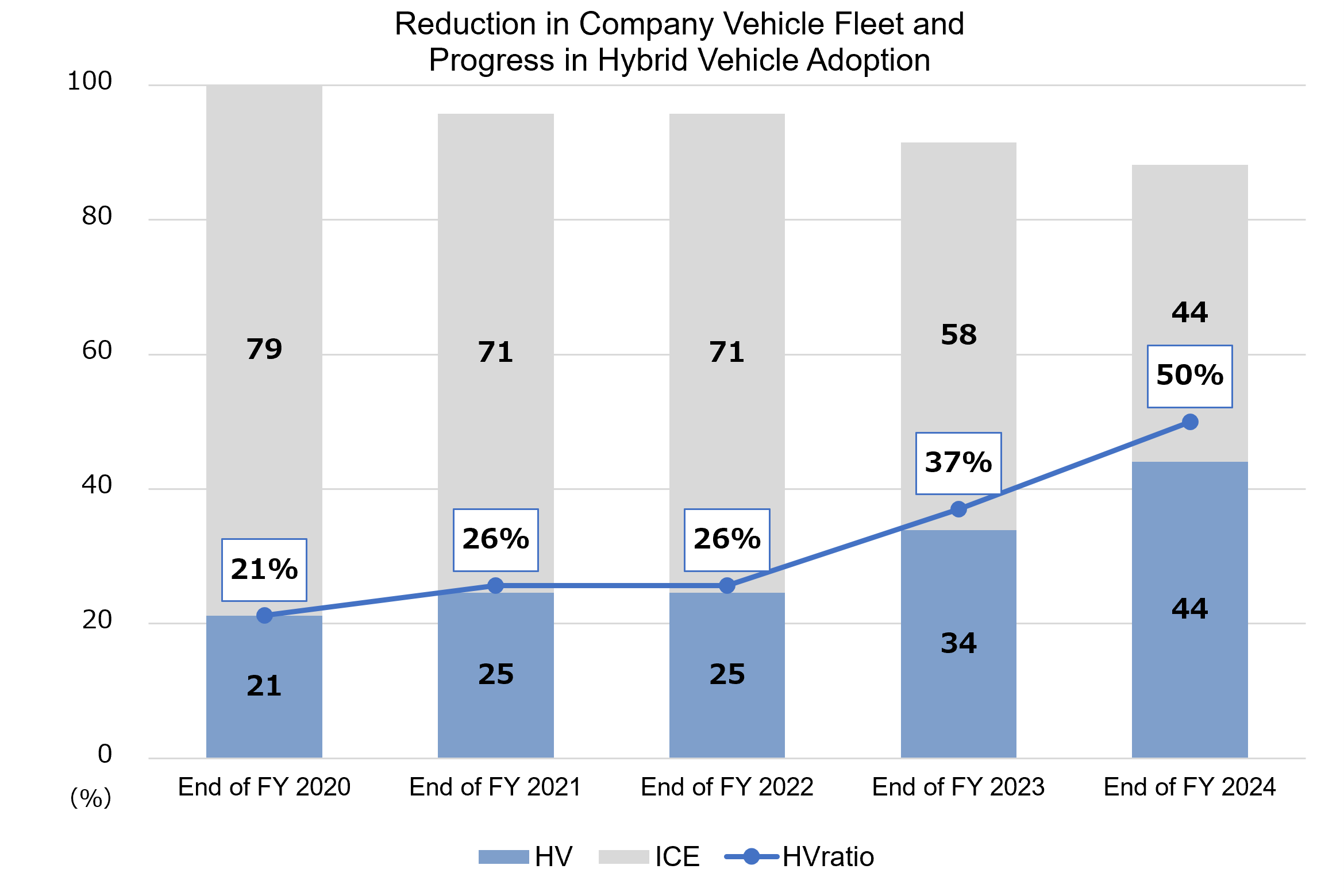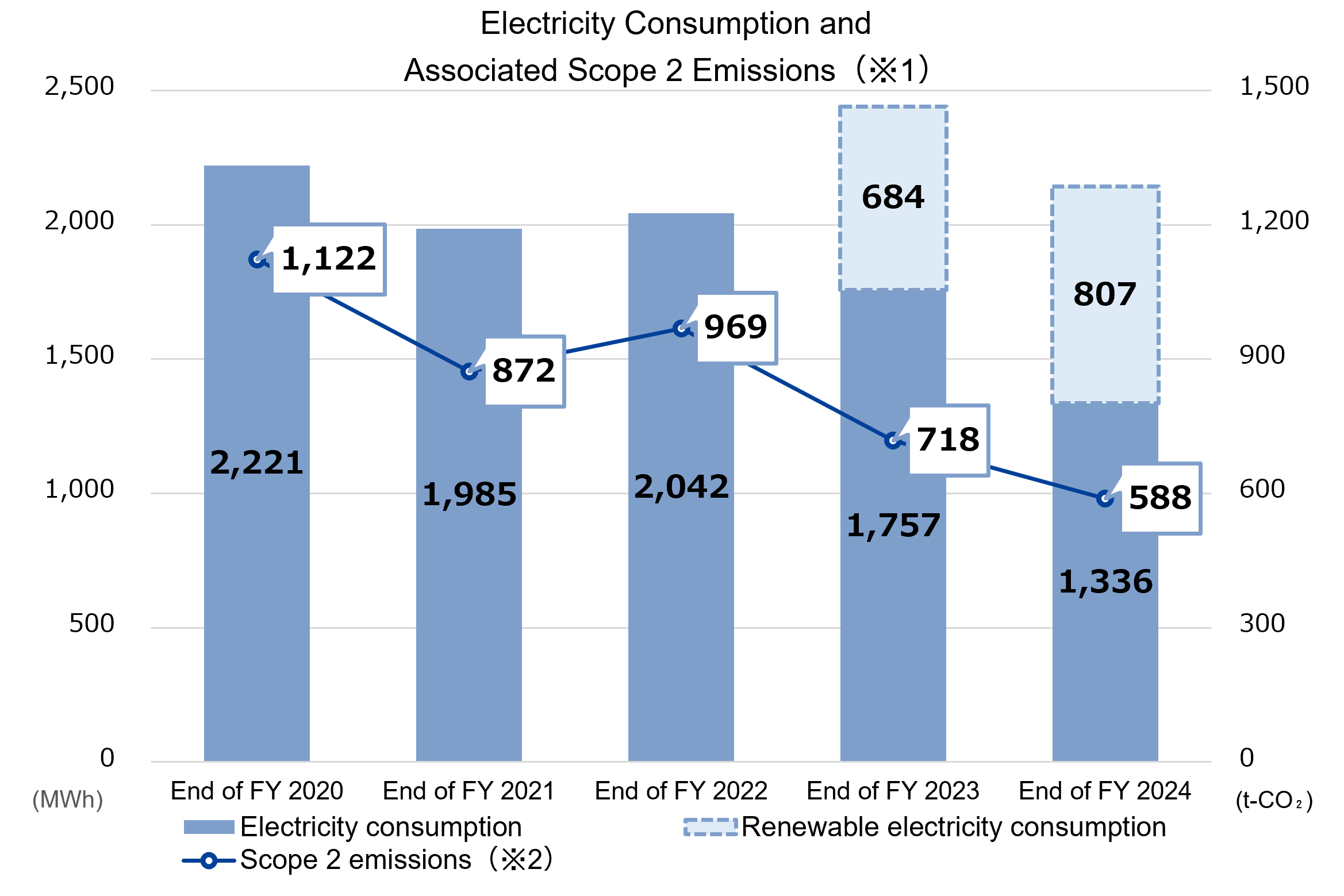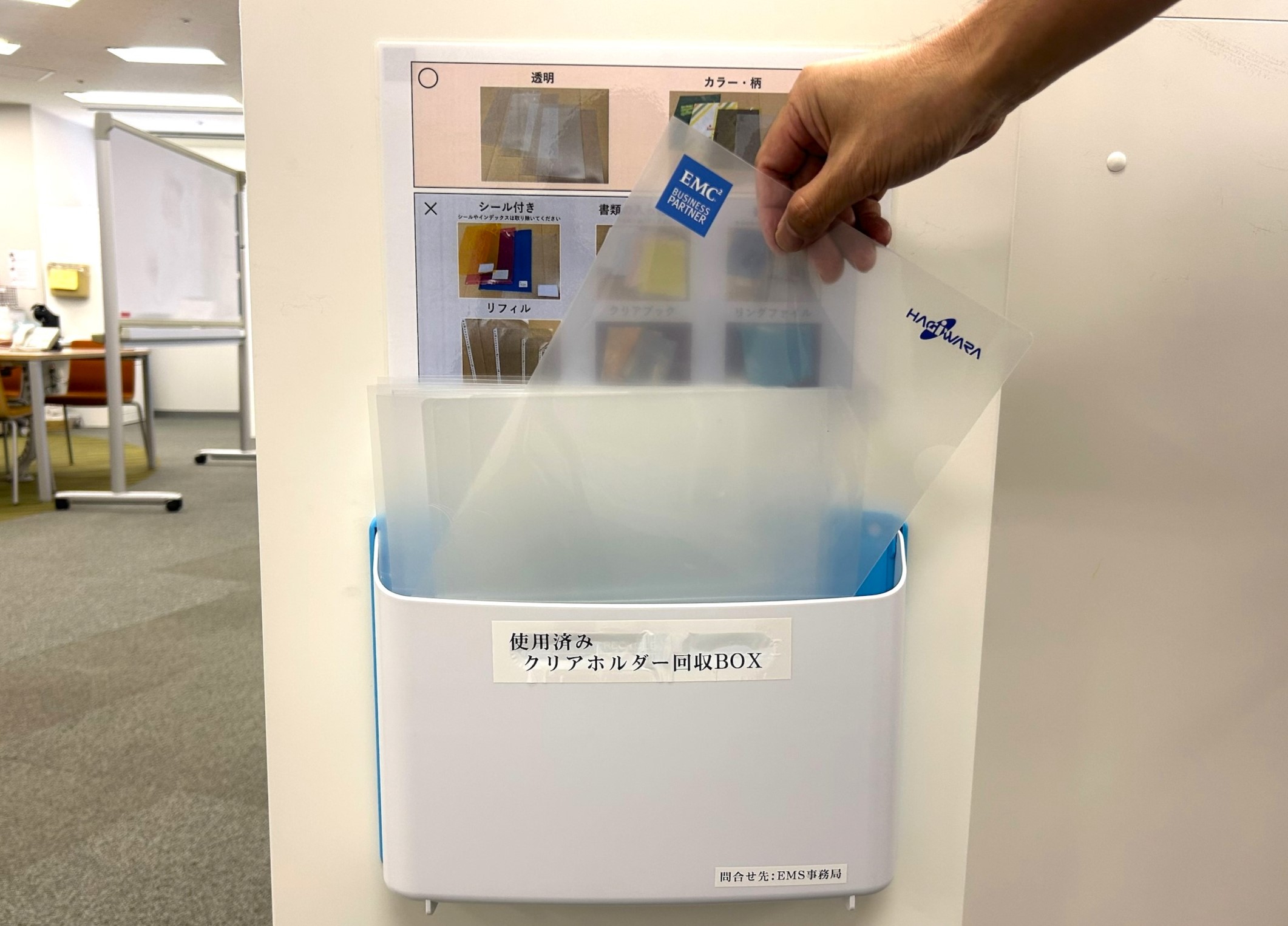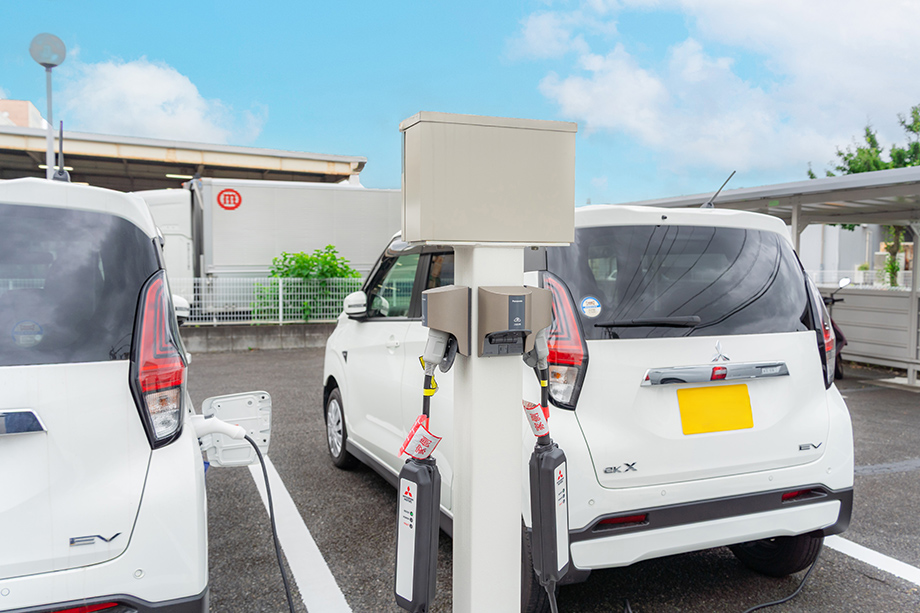Our Business Our Business Top CLOSE
- Our Business
- Our Company
-
IR Info
IR Info IR Info Top CLOSE
- Sustainability
- Home
- Sustainability
- Environment
Environment
Environmental Management/ Environmental Policy
Basic Approach
The Hagiwara Electric Group strives to conserve the environment through its business activities, aiming to create an affluent society in which nature and people coexist. We also contribute to the realization of a sustainable society by developing and providing technologies that balance the environment and economy.
Hagiwara Electric Group Environmental Policy
- We comply with environmental laws and regulations associated with our business activities, as well as other requirements to which we have agreed.
- To realize a society where nature and people coexist, we strive to prevent and reduce environmental pollution, and reduce the following environmental impacts.
- We aim to achieve carbon neutrality by reducing greenhouse gas emissions through energy conservation and promoting the use of renewable energy.
- We give due consideration to the environmental conservation of natural ecosystems and the maintenance and conservation of biodiversity.
- We make effective use of resources by reducing water and energy consumption, reducing waste, and recycling.
- The Hagiwara Electric Group prioritizes the procurement of products and services with minimal environmental impact whenever possible.
- We establish an environmental management system, set environmental targets, review them periodically, and aim for continuous improvement.
- We raise environmental awareness by making this policy known to all employees, and actively disclose it to the external stakeholders.
Environmental Management System
To promote environmental management across the entire group, the Hagiwara Electric Group is strengthening group management through a systematic and effective management system in compliance with ISO 14001.
Under the policies and significant themes set by the Sustainability Promotion Committee, we promote environmental initiatives by integrating specific efforts into relevant departments of each group company and into the framework of the Environmental Management System (EMS).
Status of Environmental Management System Certification
We have acquired ISO 14001 management system certification for the following sites, and actively promote EMS activities centered on environmental management systems.
Multiple sites have acquired ISO14001 certification and are actively promoting EMS initiatives, focusing on our environmental management system.
- HAGIWARA ELECTRIC HOLDINGS CO., LTD.
Headquarters:2-2-1 Higashi Sakura, Higashi-ku, Nagoya-shi, Aichi - HAGIWARA ELECTRONICS CO., LTD.
Headquarters:2-2-1 Higashi Sakura, Higashi-ku, Nagoya-shi, Aichi 461-0005
Miyoshi Distribution Center:122 Kawaguro, Miyoshi-cho, Miyoshi-shi, Aichi - HAGIWARA HOKUTO TECHNO CO., LTD.
Headquarters:2-2-1 Higashi Sakura, Higashi-ku, Nagoya-shi, Aichi
※Current address:4-2-25 Meieki, Nakamura-ku, Nagoya-shi, Aichi - HAGIWARA TECHNO SOLUTIONS CO., LTD.
Headquarters:2-28-23 Izumi, Higashi-ku, Nagoya-shi, Aichi - HAGIWARA TECHNO SOLUTIONS CO., LTD.
Development & Production Division
Nisshin Office:7 Shimokofukada, Asada-cho, Nisshin-shi, Aichi
| 認証規格 | 認証取得事業所 | 認証登録範囲 | 認証登録番号 | 審査登録機関 | |
|---|---|---|---|---|---|
| ISO14001 | 萩原電気ホールディングス株式会社 | 本社: 愛知県名古屋市東区東桜二丁目2番1号 |
電子デバイス・電子機器の販売およびコンピュータソフト開発、事務処理 | 20ER・1077 | 高圧ガス保安協会 ISO審査センター |
| 萩原エレクトロニクス株式会社 | 本社: 愛知県名古屋市東区東桜二丁目2番1号 三好物流センター: 愛知県みよし市三好町川畔122番地 |
||||
| 萩原北都テクノ株式会社 | 本社: 愛知県名古屋市東区東桜二丁目2番1号 |
||||
| 萩原テクノソリューションズ株式会社 | 本社: 愛知県名古屋市東区泉二丁目28番23号 |
||||
| 開発生産本部: 愛知県日進市浅田町下小深田7 |
産業用制御機器および産業用試験装置等の設計・開発、製造および引き取り修理 | JQA-EM5217 | 一般財団法人 日本品質保証機構 |
||
- ISOの登録証につきましては、弊社管理の都合上掲載しておりません。
Priority Activity Themes
Toward the realization of a society in which people and nature coexist, the Hagiwara Electric Group has set three priority themes of climate change, biodiversity and resource circulation, and work to preserve and improve the sustainable global environment.
 |
Climate change | Reducing GHG emissions from our business operations (Scope 1 and 2), contributing to emission reductions across the supply chain (Scope 3), and supporting carbon neutrality through our business activities. |
 |
Biodiversity | Striving to minimize the negative impact of our business activities on ecosystems, and contributing to nature-positive outcomes through biodiversity conservation efforts in collaboration with local communities. |
 |
Resource Circulation | Contributing to resource circulation through sustainable resource use, minimizing resource consumption, reducing waste, and promoting recycling. |
Climate Change
Basic Approach
The Hagiwara Electric Group endorsed the TCFD (Task Force on Climate-related Financial Disclosures)*1 recommendations in March 2023 and become a TCFD Consortium*2 member in April 2023. The Hagiwara Electric Group recognizes climate change as an important management issue, and in cooperation with other companies and related organizations that support the TCFD recommendations, we shall endeavor to disclose information based on the four disclosure categories described by the TCFD recommendations: governance, strategy, risk management, and metrics and targets.
- TCFD (Task Force on Climate-related Financial Disclosures)
The Task Force was established in 2015 by the Financial Stability Board at the request of the G20. It encourages companies and other organizations to assess the financial impact of risks and opportunities related to climate change on their own operations and to disclose information related to governance, strategy, risk management, and metrics and targets.
- TCFD Consortium
The TCFD Consortium was established in 2019 as a forum for companies, financial institutions, and other organizations that support the TCFD recommendations to discuss effective corporate information disclosure measures and efforts by financial institutions to make appropriate investment decisions on the basis of disclosed information.
Information-Disclosure Items Set Forth in TCFD Recommendations
| Basic Items | Outline | Detailed disclosure |
|---|---|---|
| Governance | The organization’s governance around climate-related risks and opportunities |
|
| Strategy | Impacts of climate-related risks and opportunities on the organization’s businesses, strategy, and financial planning |
|
| Risk management | Processes for identifying, assessing, and managing climate-related risks |
|
| Metrics and targets | Metrics and targets used to assess and manage relevant climate-related risks and opportunities |
|
Governance
In July 2022, we at Hagiwara Electric Group established our Sustainability Committee, which is chaired by our Representative Director, President Executive Officer, in order to cross-sectionally promote sustainability management among all companies of our group. As subordinate organizations of the Sustainability Committee, we have established various committees that promote and manage internal control, risk management, the SDGs, and ESG, and have been moving forward with strengthening group management through systematic and effective management systems.
Our Sustainability Promotion Committee (which meets quarterly) is chaired by Executive Officer for Corporate Strategy. This committee formulates policies regarding sustainability (which include environmental issues related to addressing climate change and promoting carbon neutrality), discusses and decides upon measures regarding important issues, and monitors the progress of such measures. Based on the policies and important measures of the Sustainability Promotion Committee, and centering on our Environmental Promotion Working Group, we deploy concrete initiatives regarding environmental issues targeting the relevant departments of group companies and the structures of environmental management systems, and we work to promote activities in this regard.
The chairperson of the Sustainability Promotion Committee reports to the Sustainability Committee on the status of major activities and important matters relating to the promotion of sustainability, and receives instructions from the Sustainability Committee. Then, based on examination and judgement by the Sustainability Committee, important matters are discussed and decided upon at management meetings and meetings of the Board of Directors. Thus, our operating system is designed to ensure appropriate supervision and guidance by the Board of Directors.
Organization Chart
Strategy
The Hagiwara Electric Group has conducted a quantitative scenario analysis based on a 2 degrees scenario that concerns the period up to 2050. We comprehensively analyzed the short, medium, and long-term risks and business opportunities of the Hagiwara Electric Group related to climate change, and identified the following key risks and opportunities.
We set matters that we believe will have a large impact on our businesses and corporate activities as “important matters,” and extracted these. As a result, in the area of transition risks, we extracted matters such as the effects of the introduction of carbon taxes and other changes to various laws and regulations on costs, and unaddressed risks related to information-disclosure needs. Furthermore, in the area of physical risks, we extracted matters such as supply-chain disruptions caused by the intensification of abnormal weather, and risks regarding declines in sales caused by the effects of a rise in average temperatures and so on.
Going forward, based on that analysis, we will identify risks and opportunities that apply to a 1.5 degrees scenario, reevaluate their degree of impact, consider various countermeasures, and then incorporate them into our management strategy.
Identified Risks and Opportunities
| Category | Factor | Business impact | Time frame | Impact level | |
|---|---|---|---|---|---|
| Main risks | Political measures, laws, and regulations | Orders and regulations regarding production and services for automobile-related customers | Our company has supply chains related to trading-company functions, and these include semiconductor manufacturing and other types of manufacturing If the introduction of carbon taxes and other changes to various laws and regulations have negative effects within these supply chains regarding the supply of materials, material prices, and so on, the purchasing costs of our company will increase due to a sharp rise in cost prices |
Medium -term |
Large |
| Decrease in sales and profit due to the phenomenon related to the quantity of gasoline vehicle-related parts and changes in the parts structure, as automobile-related customers shift to EVs in response to stricter policies for the automobile industry | Medium -term |
Medium | |||
| Strengthening of emission regulations | Pressure on profits due to higher logistics and transportation costs resulting from higher freight and transportation costs | Medium -term |
Medium | ||
| Technologies | Replacement of existing products with low-carbon technologies, failure to invest in new technologies, etc. | Increase in capital investment costs due to expansion of in-house power generation infrastructure such as solar power generation facilities | Medium -term |
Medium | |
| Increase in investment costs for the development of environmentally friendly in-house products (industrial computers, inspection equipment, etc.) | Medium -term |
Small | |||
| Reputation | Changes in investor and customer behavior | Possibility of insufficient response to environmental information disclosure needs (stricter ESG assessment standards, expansion of areas requiring disclosure) resulting in withdrawal of investment in the company, decline in share price, impact on human resource acquisition, and risk of human resource outflow | Medium -term |
Large | |
| Acute physical risks | Intensification of abnormal weather | Increased severity and frequency of extreme weather events, such as typhoons and floods, increases in the risk of supply chain disruptions and prolonged infrastructure outages (which would reduce sales) | Long -term |
Medium | |
| Chronic physical risks | Rise in average temperatures | Rising temperatures increasing the cost of energy used for air-conditioning in the company's offices, and the cost of renovation and rent increasing due to energy-saving renovations of buildings for coping with rising temperatures and relocations to properties with higher environmental performance | Long -term |
Small | |
| Rising temperatures increasing energy costs for our suppliers, which in turn will increase our purchasing costs due to rising costs | Long -term |
Medium | |||
| Main opportunities | Products and services | Popularization and expansion of electric vehicles | Increase in opportunities for proposals due to changes in the composition of components related to electric vehicles (motors, inverters, batteries, etc.), and increased business opportunities in software verification and development | Medium -term |
Large |
| Business changes accompanying shift to EV and energy-saving measures | Expanded business opportunities regarding battery monitoring and motor & inverter-related production equipment in the EV market as a result of policies to promote electric vehicles | Medium -term |
Large | ||
| Expanded opportunities in the IT solutions business (cutting-edge IT, DX promotion, cloud computing, etc.) and industrial equipment business (devices, infrastructure, IoT, control/analysis, etc.) for improving the efficiency, productivity and energy-saving performance of customers' manufacturing processes, as a result of growing awareness regarding environmental impact and resource conservation | Medium-term | Large | |||
| Markets | Changes to markets and trends | Increased opportunities to create innovations that contribute to solving social issues, such as carbon neutrality compliance, and participation in new businesses and wider domains | Medium to long-term | Medium | |
| Resilience | Promotion of energy-saving measures | Promotion of activities to reduce the company's internal environmental impact, increased use of environmentally friendly products such as fixtures, and improved environmental awareness among employees, resulting in an improved corporate reputation and a positive reputation regarding attracting assets | Medium -term |
Small |
【Manifestation period】
Short-term: by around 2025 Medium-term: by around 2030 Long-term: by around 2050
【Degree of impact】
We assessed the degree of impact as being, large, medium, or small based on an evaluation of quantitative results in terms of sales, profit, and operating costs.
【The following are representative examples of the scenarios we utilized】
Transition risk/opportunity: IEA Net Zero by 2050
Physical risk/opportunity: RCP 8.5
Risk management
Centering on the Sustainability Promotion Committee, we at Hagiwara Electric Holdings specify and analyze risks and opportunities related to climate change. We sort out the risks through scenario analysis in which we refer to external scenarios and so on of the Intergovernmental Panel on Climate Change (IPCC) and International Energy Agency (IEA). Then, we move forward with appropriately addressing such risks based on identifying levels of impact regarding businesses and specifying risks that are of particularly high importance in light of industry trends.
The chairperson of the Sustainability Promotion Committee participates in our Risk Management Committee (which meeting quarterly), and thus we have a structure in which perspectives on climate-related problems are reflected in the company-wide risks and business risks of our group. This chairperson regularly and appropriately gives reports to, and holds discussions with, the Sustainability Committee, which carries out integrated management, and management meetings and meetings of the Board of Directors, which provide supervision and guidance, and as such, the Board of Directors recognizes the company-wide risks of our group.
We will strengthen processes for managing climate-related risks, and strengthen structures for integrating climate-related risk management and the comprehensive risk management of our group, and we will work to apply such structures to management strategies regarding climate-related risks.
Metrics and targets
We calculated Scope 1 and Scope 2 (for FY2020 onward) and Scope 3 (for FY2021 onward) in order to achieve our medium-to-long-term greenhouse gas (GHG) emission reduction targets. On the basis of those results, we had set a reduction target for FY2027 for Scope 1 and Scope 2 (25% reduction from the reference year) and had launched specific initiatives in order to achieve those targets. However, we achieved the target by FY2023 ahead of schedule. Accordingly, as a new reduction target, we have revised our goal to achieve a reduction of 50% or more compared to the reference year by 2030. To achieve our new targets, we are fundamentally committed to essential and meaningful reduction activities based on self-initiated efforts. Additionally, for Scope 3, we have begun reviewing our calculation logic to improve accuracy and ensure that our activities are appropriately reflected.
Scope 1, 2 and 3 Greenhouse Gas Emissions at Hagiwara Electric Group
| Emissions volume [t-CO2] | |||||||||
|---|---|---|---|---|---|---|---|---|---|
| FY2020 | FY2021 | FY2022 | FY2023 | FY2024 | |||||
| Total for Scope 1, 2, and 3 (Market standards) | - | 584,432 | 615,806 | 740,736 | 1,036,262 | ||||
| Total for Scope 1, 2, and 3 (Location standards) | - | 584,421 | 615,724 | 741,095 | 1,036,591 | ||||
| Total for Scope 1 and 2 (Market standards) | 1,457 | 1,168 | 1,257 | 1,017 | 887 | ||||
| Total for Scope 1 and 2 (Location standards) | 1,480 | 1,157 | 1,175 | 1,376 | 1,216 | ||||
| Scope1 | Direct emissions | 335 | 296 | 288 | 299 | 299 | |||
| Scope2 | Indirect emissions from energy sources | Market standards | 1,122 | 872 | 969 | 718 | 588 | ||
| Location standards | 1,145 | 861 | 887 | 1,077 | 917 | ||||
| Scope3 | - | 583,264 | 614,549 | 739,719 | 1,035,375 | ||||
| Category1 | Purchased goods and services | - | 561,639 | 604,577 | 729,602 | 1,022,780 | |||
| Category2 | Capital goods | - | 695 | 622 | 1,337 | 2,007 | |||
| Category3 | Fuel and energy-related activities not included in Scope 1 or Scope 2 | - | 193 | 193 | 141 | 134 | |||
| Category4 | Transportation and delivery (upstream) | - | 20,384 | 8,732 | 8,225 | 9,990 | |||
| Category5 | Waste generated in operations | - | 59 | 110 | 82 | 66 | |||
| Category6 | Business travel | - | 92 | 98 | 103 | 110 | |||
| Category7 | Employee commuting | - | 202 | 217 | 229 | 241 | |||
| Category9 | Transportation and Distribution (downstream) | - | - | - | - | 47 | |||
About calculation of greenhouse gas emissions
【The scope of calculation for greenhouse gas emissions】
The scope of Scope 1 and 2 calculation for fiscal years 2020 and 2024 includes all consolidated subsidiaries except BELLADATI, a new subsidiary, and Scope 3 excludes some consolidated subsidiaries from the scope of calculation. Regarding the scope of calculation for fiscal years from 2021 to 2023, please see the third-party Greenhouse Gas Emissions Verification Statements below.
【Calculation method】
For Scope 1 (fuel-related), we are utilizing “Calculation Methods and Emission Factors for Calculation, Reporting, and Publication Systems” by the Ministry of the Environment and the Ministry of Economy, Trade and Industry.
For Scope 2 (electricity-related), we are utilizing “Calculation Methods and Emission Factors for Calculation, Reporting, and Publication Systems” by the Ministry of the Environment and the Ministry of Economy, Trade and Industry, and adjusted emission factors divided by electric power provider based on the Act on Promotion of Global Warming Countermeasures.
As for overseas bases, we used the latest factors, which are provided by power-supply companies each year.
For Scope 3, we are utilizing “Calculation Methods and Emission Factors for Calculation, Reporting, and Publication Systems” by the Ministry of the Environment and the Ministry of Economy, Trade and Industry.
We have excluded categories 8, 9, 11, 13, 14, and 15 because we have determined that none of our activities apply.
We have included category 9 in the calculation from fiscal year 2024.
Categories 10, 11, and 12 are currently under review due to changes in the scope of aggregation, and we are in the process of evaluating and revising the calculation methods.
Third-party verification
The Hagiwara Electric Group gets third-party verification done by the Japan Management Association for the purpose of ensuring the reliability of the calculation data.
The Hagiwara Electric Group’s Scope reduction targets
We had set a target of 25% reduction from the reference year for Scope 1 and Scope 2 by FY2027. However, we achieved the target by FY2023 ahead of schedule. Accordingly, as a new reduction target, we have revised our goal to achieve a reduction of 50% or more compared to the reference year by 2030. To achieve our new targets, we will be fundamentally committed to essential and meaningful reduction activities based on self-initiated efforts.
| Metrics | Reference year | Target year | Target level |
|---|---|---|---|
| Scope1,2 | FY2020 | FY2030 | Reduction of 50% or more |
Hagiwara Electric Group’s Initiatives Toward Carbon Neutrality
The Hagiwara Electric Group has been planning and launching activities aimed at reducing CO₂ emissions since FY2022.
Company Vehicles Management
For Scope 1, we are working to reduce fuel consumption due to the use of company vehicles by systematically switching to hybrid company vehicles and using data from our telematics system (e.g., utilization rate) and promoting car sharing to reduce the number of company vehicles.
Introduction of Renewable Energy
As for Scope 2, we are gradually switching the electricity used at our domestic sites to renewable energy sources to reduce GHG emissions.
As of June 2025, 5 domestic sites have introduced renewable energy sources.
- Regarding the sites included in the aggregation
All sites are included from FY2020 and from FY2023 onward.
In FY2021 and FY2022, some sites were excluded.
(Excluding BELLADATI, which was newly consolidated as a subsidiary) - Figures are calculated based on market standards.
Water Conservation
Basic Approach
The business activities of the Hagiwara Electric Group have minimal direct impact on the natural environment. However, we recognize that the products and services we handle may have indirect effects on water resources, such as water consumption during production and usage stages.
As a first step, we are monitoring water usage within the scope of our direct operations. Based on the level of impact, we also acknowledge the need to engage with suppliers and will continue our efforts accordingly.
Main Initiatives
In evaluating water security-related risks and opportunities, we organize and assess them by collecting and utilizing external information, including expert opinions. These evaluations are reviewed by the Sustainability Promotion Committee and then submitted to the Sustainability Committee and the Board of Directors for approval by management. We recognize that identified risks and opportunities are not fixed, and therefore, we review them at least once a year through the governance structure and process described above.
Water Consumption Management
| FY2022 | FY2023 | |
|---|---|---|
| Total water withdrawal | 10,963 | 11,648 |
| Total water discharge | 10,963 | 11,648 |
Assessment of Water Stress Areas
At Hagiwara Electric Group, we use the AQUEDUCT evaluation tool developed by the World Resources Institute (WRI) to assess water risks and identify priority regions at all domestic and overseas sites, as well as at key supplier locations.
As a result of the analysis conducted in FY2024, we confirmed that five sites across four countries (China, the United States, Thailand, and India) within the Hagiwara Electric Group are classified as high-risk in terms of water stress. The total water withdrawal at these sites in FY2023 was 543 m³, and since most of the water used in business activities is tap water for domestic purposes, we have determined that there is currently no significant risk.
| Baseline Water Stress Level | number of sites |
|---|---|
| 0:Low (<10%) | 3 |
| 1:Low-Medium (10-20%) | 3 |
| 2:Medium-High (20-40%) | 7 |
| 3:High (40-80%) | 2 |
| 4:Extremely High (>80%) | 3 |
Reduction of Environmental Impact
Basic Approach
Toward the realization of a society in which people and nature coexist, the Hagiwara Electric Group engages in activities that minimize the use of limited resources, promote reuse, and contribute to the realization of sustainable resource circulation.
Main Initiatives
Reuse of Packaging Materials at Distribution Centers
At the Miyoshi Distribution Center, we are engaged in recycling packaging materials. For product packaging at the time of shipment, we are working to reduce plastic waste by reusing surplus plastic wrapping materials from incoming shipments.
Ecocap (Bottle Cap Recycling) Activities
With the aim of contributing to resource circulation, we are engaged in the Ecocap Activities, which involves collecting plastic bottle caps purchased by employees.
The collected plastic bottle caps are donated to the NPO Eco-Cap Movement Association, where they are utilized as recycled plastic materials to promote recycling and reduce CO₂ emissions. This initiative also contributes to supporting medical care in developing countries and promoting employment opportunities for people with disabilities and the elderly through the recycling process.
LED lighting and adopting renewable energy
At our manufacturing and distribution sites, we reduce power consumption by switching to LED lighting. We also actively introduce renewable energy at these sites, and work to reduce both energy consumption and GHG emissions.
Collection of Used Clear Holders
To promote effective resource utilization and reduce CO₂ emissions, we are supporting the initiative by Askul Corporation called the “Askul Resource Circulation Platform (Used Clear Holders)” and are actively promoting the collection of used clear holders throughout the company.
Introduction of Electric Vehicle (EV) Commuting Services
At Hagiwara Engineering, an electric vehicle (EV) commuting service has been introduced for employees seconded from group companies.
We not only ensure commuting options for employees on solo assignments who are unable to bring their personal vehicles, but also contribute to reducing GHG emissions as a company. Furthermore, the power supply ports used for EV charging are available not only for the vehicles of dispatched employees, but also for customers who visit us in EVs. We aim to reduce the environmental impact not only of our company but also of all companies involved.
Electric vehicles also play an important role from the perspective of business continuity planning (BCP), as they can be used as "running storage batteries" and as an emergency power source in the event of a disaster.
Initiatives Related to Environmentally Conscious Products
In Electronic Devices Business, which primarily handles in-vehicle devices, we contribute to reducing the power consumption of finished products through the sale of energy-efficient devices. As hybrid and electric vehicles become increasingly widespread, we also support the automotive industry's shift toward greater fuel efficiency by ensuring a stable supply of device products such as power semiconductors and microcomputers used in these vehicles. Through these efforts, we help reduce environmental impact.
In Technology Solutions Business, we offer IT equipment and services that enhance production efficiency. Through these offerings, we help improve energy efficiency at manufacturing sites and contribute to reducing environmental impact.
In office supplies, we give priority to environment-friendly products (such as pens made from recycled plastics). We also handle novelties used in our business activities that are made of rice resin, bamboo, recycled marine plastics, and other environment-friendly products.
Environmental Performance Data
Energy Consumption
| FY2023 | FY2024 | ||
|---|---|---|---|
| Total energy consumption | 3,831 | 3,729 | |
| Electricity | 2,441 | 2,142 | |
| Heat | 11 | 192 | |
| Gasoline | 756 | 715 | |
| Gas | 623 | 680 | |
| Total renewable energy consumption | 684 | 807 | |
| Renewable energy ratio(%) | 18 | 22 | |
Water Consumption
| FY2022 | FY2023 | |
|---|---|---|
| Total water withdrawal | 10,963 | 11,648 |
| Total water discharge | 10,963 | 11,648 |
Total Waste Generation
| FY2021 | FY2022 | FY2023 | FY2024 | |
|---|---|---|---|---|
| Industrial Waste Generation※ | 87.7 | 162.6 | 134.1 | 89.5 |
| Municipal Waste Generation※ | 9.3 | 16.2 | 7.8 | 13.1 |
- Scope of Aggregation: Three Major Domestic Companies (Hagiwara Electric Holdings, Hagiwara Electronics, Hagiwara Techno Solutions)

